Picture This: Contemporary Photography and India presents the work of four contemporary photographers with ties by birth or affinity with the subcontinent. In a nation that has often been the focus of the photographer’s lens, these artists rethink or resist the accepted documentary aesthetic to more accurately render the identities of contemporary Indian people.
Whether or not they were raised there, the four artists—Gauri Gill, Sunil Gupta, Max Pinckers, and Pamela Singh—share a keen interest in the visual traditions and intricacies of Indian daily life.
Gauri Gill’s portraits
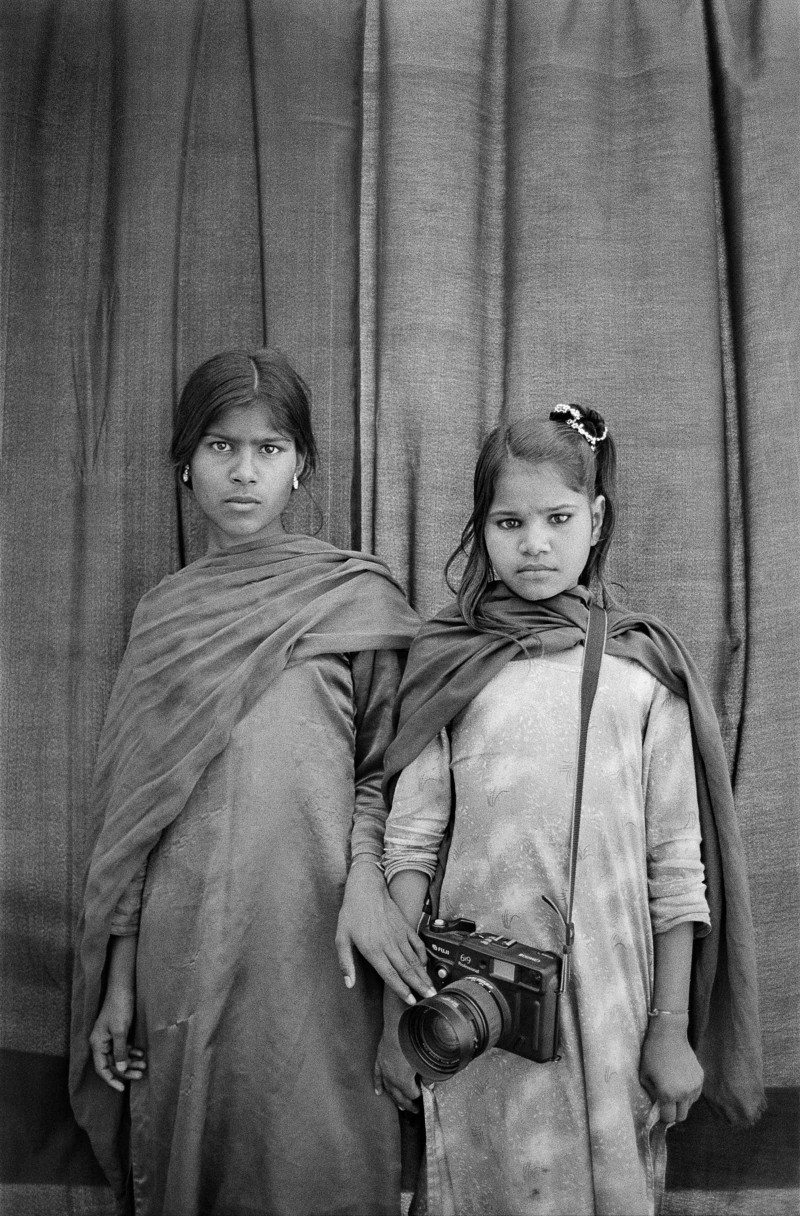
New Delhi-based Gauri Gill (b. 1970, Chandigarh, India) grasps the social implications of photography and uses her camera to trigger change. This work, from her Balika Mela project, is the product of her time spent at a fair for girls in rural Rajasthan, where she set up a makeshift studio and invited the attending girls to be photographed by her. The processes utilized—gelatin silver prints and digital images printed on glass—are the most traditional in the exhibition, harkening back to historical traditions and techniques in photography. Transcending the traditional photo processes, Gill used photography to empower the girls to take ownership of the person they project, encouraging them to pose as they wished, to express themselves with the freedom to perform and bring their own props, even offering subsidized prints to them afterward if they wished. Visually, the photographs follow in the tradition of the studio portraits of August Sander, whose unflinching portrayals also allowed the everyday people he photographed to assert the power of their often-overlooked identity.
Sunil Gupta’s search for belonging
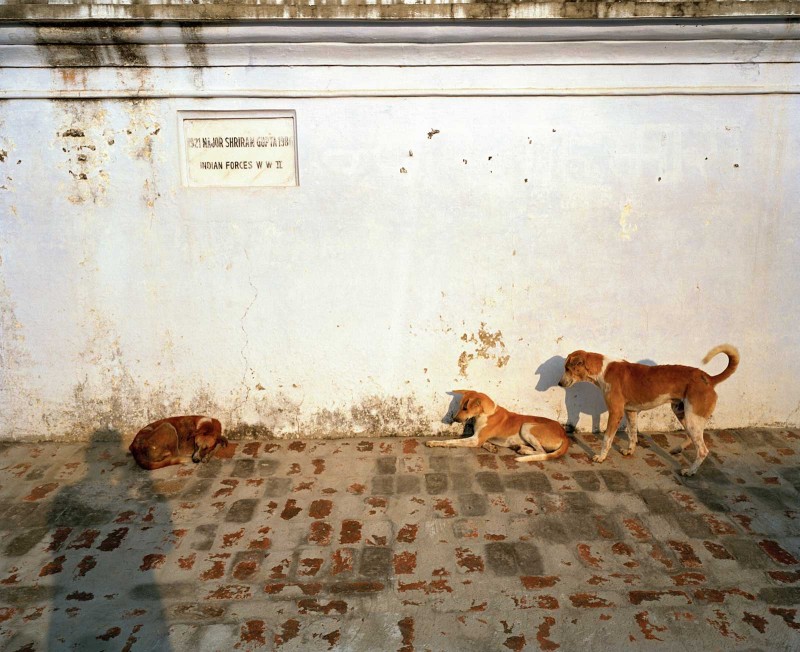
Focusing on his own experience of communities in New York and his native India, Sunil Gupta (Canadian, b. 1953, New Delhi), who lives and works in London and Delhi, presents two seemingly disparate series of works—black-and-white early street portraits from his 1976 series Christopher Street, shot in Manhattan’s West Village before the onslaught of the AIDS epidemic, and an ongoing photo project, Country: Portrait of an Indian Village, in which he grapples with the death of his father and his impressions of his father’s ancestral village. While the two series depict wildly different scenarios, both are indicative of Gupta’s search for a community to which he can truly belong.
Gupta, who is gay and HIV-positive, is a leading figure in Indian photography. Country: Portrait of an Indian Village is particularly affecting. Here the artist presents scenes in his father’s ancestral village of Mundia Panar. Of this series, the artist says: “Over the years I’ve photographed it sporadically as part of my family album.” The color photos, which seem anthropological, are, Gupta says, his personal exploration of issues of family, gender and sexuality, and property and inheritance.
Pamela Singh’s exploration of identity
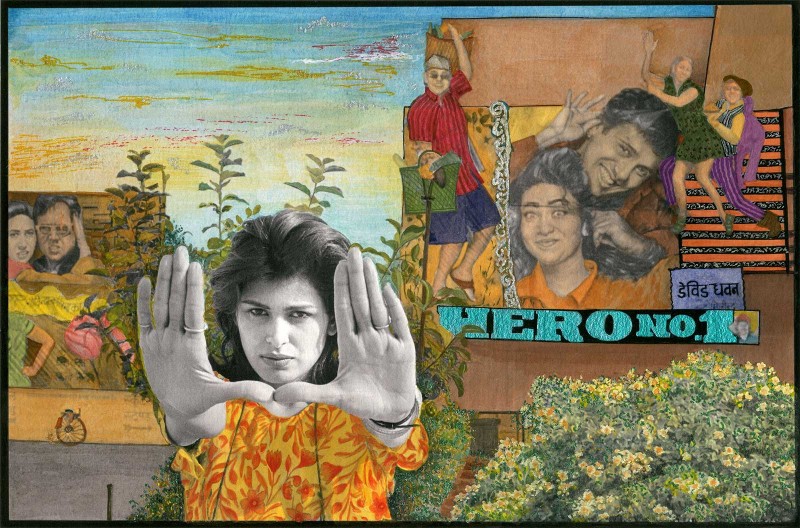
Coming from a street photography and photojournalism background, Pamela Singh (b. 1962, New Delhi, India) shifted her practice in 2000 to a more interpretive and expressive use of the medium. Singh turns the camera on herself for this work, with a backdrop of the city of Jaipur. The series Tantric Self Portraits mixes street photography with self-portraiture and Indian miniature painting, utilizing painted photographs and implanted iconography to illustrate the dichotomy of Singh’s cosmopolitanism and the more orthodox community which she chose as context. These works are about the contrast of old and new, the self-constructed identity versus identity created by sacrosanct social, cultural, and personal boundaries imposed by the culture of India.
Max Pinckers’ cinematic scenes
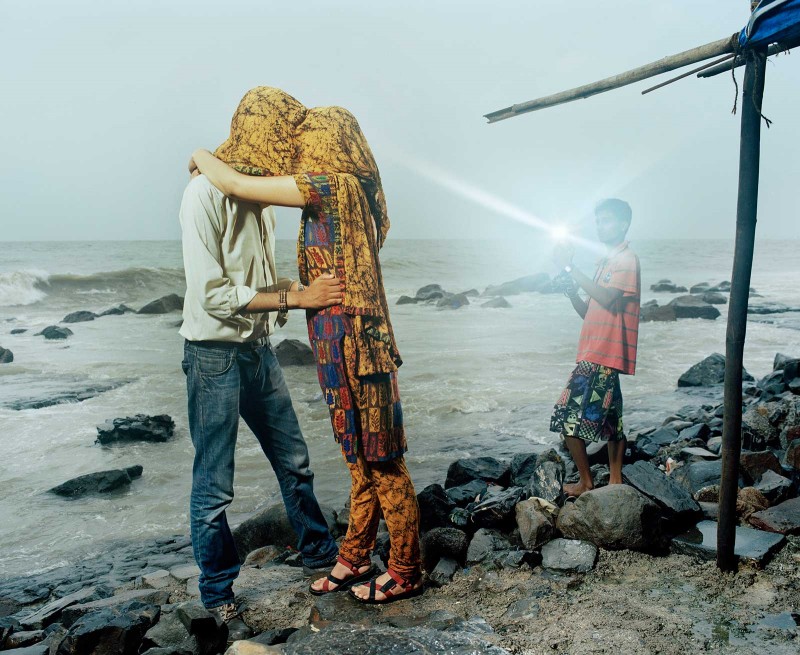
Plucking elements of Bollywood glam and placing them into both staged and stumbled-upon scenes, Will They Sing Like Raindrops or Leave Me Thirsty, a series by Max Pinckers (b. 1988, Brussels, Belgium) is cinematic and adventurous, seeming both polished and gritty at the same time.
The work is installed variously as framed inkjet prints, an illuminated image box on the floor, and in a photobook in a glass vitrine. I think the work functions best in book format, in which the images’ narrative potential can unfold on an intimate scale, page by page. I would have enjoyed a more accessible display of the book. It would have been wonderful to turn the pages myself.
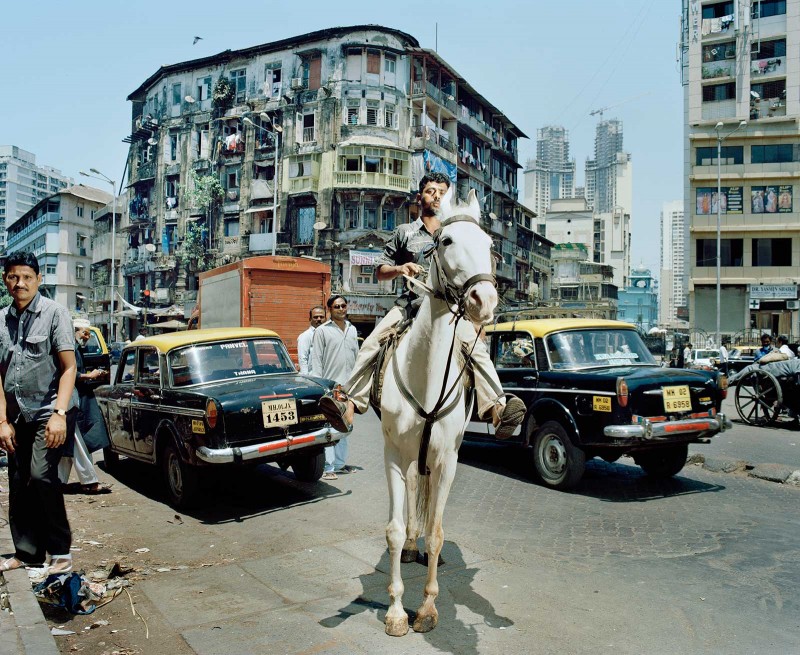
For the museum, this exhibit of Indian contemporary photography is a great complement to the PMA’s commitment to Indian art. For Philadelphians, the show is a great introduction to work that has not been widely exhibited here before. The location of the show in the Perelman building is just down the hall from a related show: Drawn from Courtly India, a collection of drawings by the master draftsmen of northern India’s royal courts. Together, Picture This and Drawn from Courtly India provide a deeper context of art and iconography of the second-most populous country in the world, with more than 1.2 billion people according to The World Factbook.
Organized by Nathaniel Stein, Horace W. Goldsmith Curatorial Fellow in Photography, Picture This makes it clear that contemporary photography in India is exciting, and that we should share in that excitement and start paying more attention.
Picture This: Contemporary Photography and India, Julien Levy Gallery, Perelman Building of the Philadelphia Museum of Art. On view Dec. 6, 2015 – April 3, 2016, visiting hours Tuesday – Sunday, 10 am – 5 pm.









